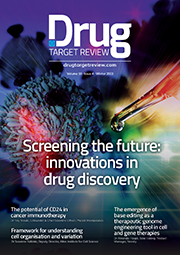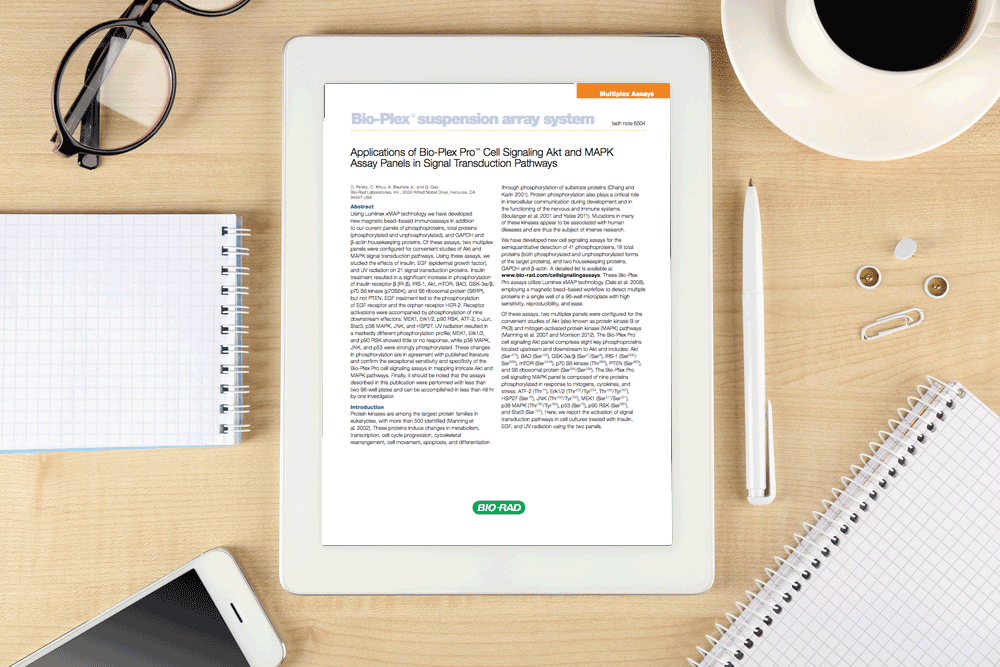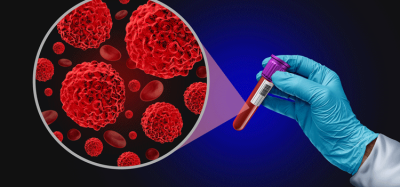Whitepaper: Applications of Bio-Plex Pro™ cell signaling Akt and MAPK assay panels in signal transduction pathways
Posted: 26 August 2016 | Bio-Rad Laboratories | No comments yet
In this whitepaper, discover the applications of Bio-Plex Pro cell signalling Akt and MAPK assay panels in signal transduction pathways…
This study confirms the sensitivity and specificity of the BioPlex Pro cell signaling assays in mapping the intricate Akt and MAPK pathways employing a magnetic bead-based workflow to detect multiple proteins.
Using Luminex xMAP technology we have developed new magnetic bead–based immunoassays in addition to our current panels of phosphoproteins, total proteins (phosphorylated and unphosphorylated), and GAPDH and ß-actin housekeeping proteins. Of these assays, two multiplex panels were configured for convenient studies of Akt and MAPK signal transduction pathways. Using these assays, we studied the effects of insulin, EGF (epidermal growth factor), and UV radiation on 21 signal transduction proteins. Insulin treatment resulted in a significant increase in phosphorylation of insulin receptor-ß (IR-ß), IRS-1, Akt, mTOR, BAD, GSK-3α/ß, p70 S6 kinase (p70S6K), and S6 ribosomal protein (S6RP), but not PTEN. EGF treatment led to the phosphorylation of EGF receptor and the orphan receptor HER-2. Receptor activations were accompanied by phosphorylation of nine downstream effectors; MEK1, Erk1/2, p90 RSK, ATF-2, c-Jun, Stat3, p38 MAPK, JNK, and HSP27. UV radiation resulted in a markedly different phosphorylation profile; MEK1, Erk1/2, and p90 RSK showed little or no response, while p38 MAPK, JNK, and p53 were strongly phosphorylated. These changes in phosphorylation are in agreement with published literature and confirm the exceptional sensitivity and specificity of the Bio-Plex Pro cell signaling assays in mapping intricate Akt and MAPK pathways. Finally, it should be noted that the assays described in this publication were performed with less than two 96-well plates and can be accomplished in less than 48 hr by one investigator.
This whitepaper is restricted - login or subscribe free to access


Why subscribe? Join our growing community of thousands of industry professionals and gain access to:
- quarterly issues in print and/or digital format
- case studies, whitepapers, webinars and industry-leading content
- breaking news and features
- our extensive online archive of thousands of articles and years of past issues
- ...And it's all free!
Click here to Subscribe today Login here
Related content from this organisation
- Bio-Rad introduces mixed-mode resin for biomolecule purification
- New insights into the role of viral capsids in gene therapy safety
- The essential role of recombinant phage display antibody libraries
- Optimised antibody panels for CTC and rare cell enumeration
- Developing next generation non-replicative HSV-1 vectors for sustainable and more precise gene therapies
Related topics
Immunoassays, Protein
Related organisations
Bio-Rad Laboratories








